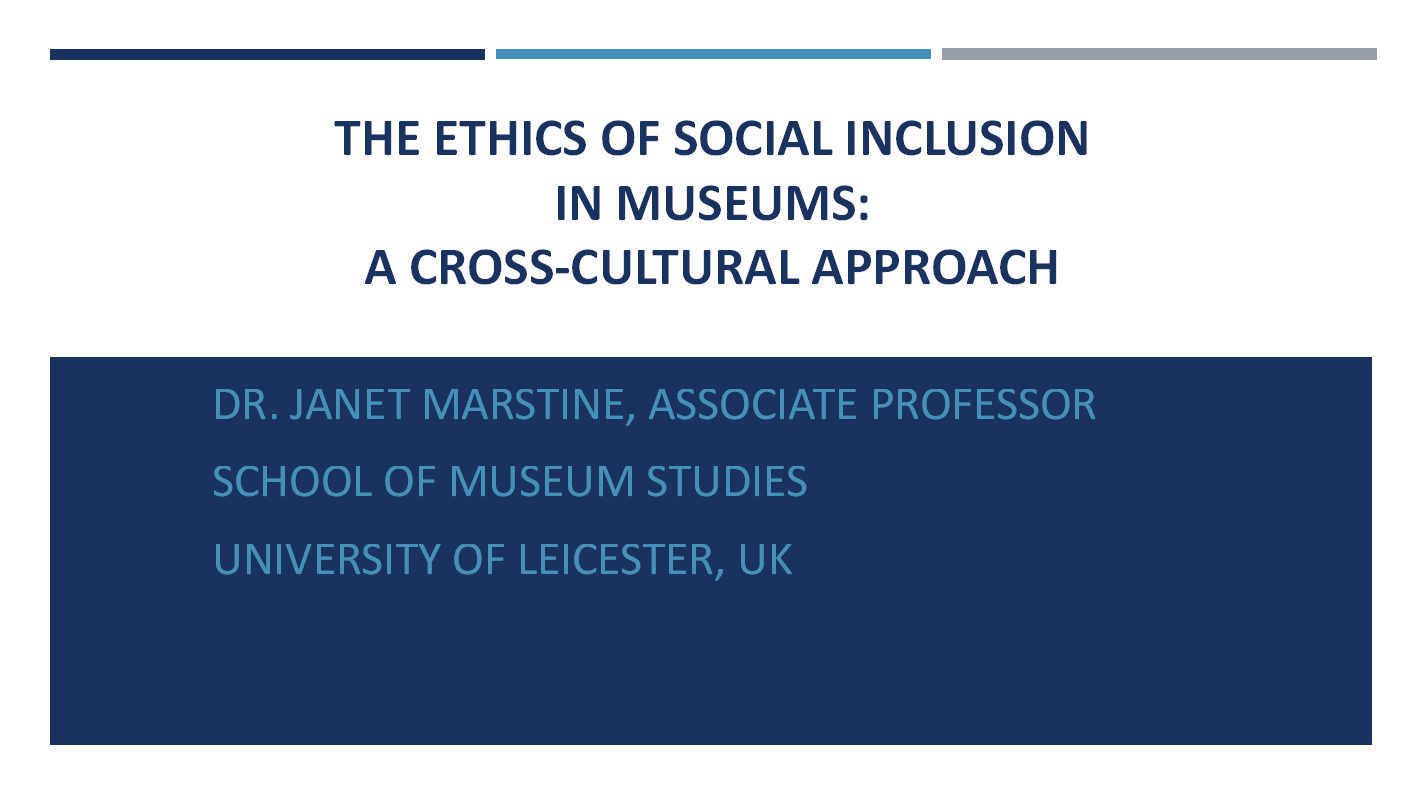The Ethics of Social Inclusion in Museums: A Cross-Cultural Approach
05/16/2018

Qian Xuesen Library & Museum welcomes the second lecture themed on museum ethics this year.
Dr. Janet Marstine from School of Museum Studies of University of Leicester delivered a seminar for QLM staff with a focus on a cross-cultural discussion and comparison between US, UK and China’s museum practices in the understanding of social inclusion.
What is social inclusion? Why is this an ethical issue in the museum context?
Social inclusion is a developing notion even in the western world. It encompasses specific policies and practices that diversify museum visitors in terms of under-represented groups. Not only about visitor numbers with the difference of age, gender, income, race and ethnicity, religion or disability, social inclusion in the museum context also concerns depth and quality of engagement. The generally acknowledged expectation is to deliver positive social outcomes, but the solutions are definitely context dependent, considering the diversity in both social groups and museums. Compared with the widespread use of the concept, social inclusion in China can be interpreted into various terms, for instances, access, service, diversification, or equality of opportunity.
Why is social inclusion important? Recognizing cultural rights.
Cultural rights is not simply about the right to consume culture but a more active set of rights of diverse public to participate in culture towards both self-actualization and the shaping of museum themselves. The reality is that most people have little knowledge of their cultural rights, therefore there is no real capacity to advocate for them. But museums have ethical responsibility to engage with public in ways that empower them to assert and to make use of cultural rights.
Approaches of increasing social inclusion in museums
Passive approach or accessible approach is generally embedded in the following museum practices: free entry, universal design, signage and audio in multiple languages, designated days for specific groups, and providing culture of interest to “targeted” groups. Ethical issues may arise from passive approach are that visitors have no voice and it’s a deficit or welfare model essentially.
Active approach or participatory approach is created in more visitor-centred engagements. Visitors construct their own meaning and have free choice in learning through multi-sensory elements and dialogues in the museums. The relation can even extends beyond walls of museums into communities. While we are confident that active approach takes a progressive standpoint, ethical issues are still there to explore. We may decide whether museum as a platform more about deeper engagement or just edutainment, more about dialogues or in fact the hierarchy is still maintained.
Transformative approach emphasizes on co-production of museum curatorship and activities between museum staff and the public, thus creating a sense of care and belonging.
